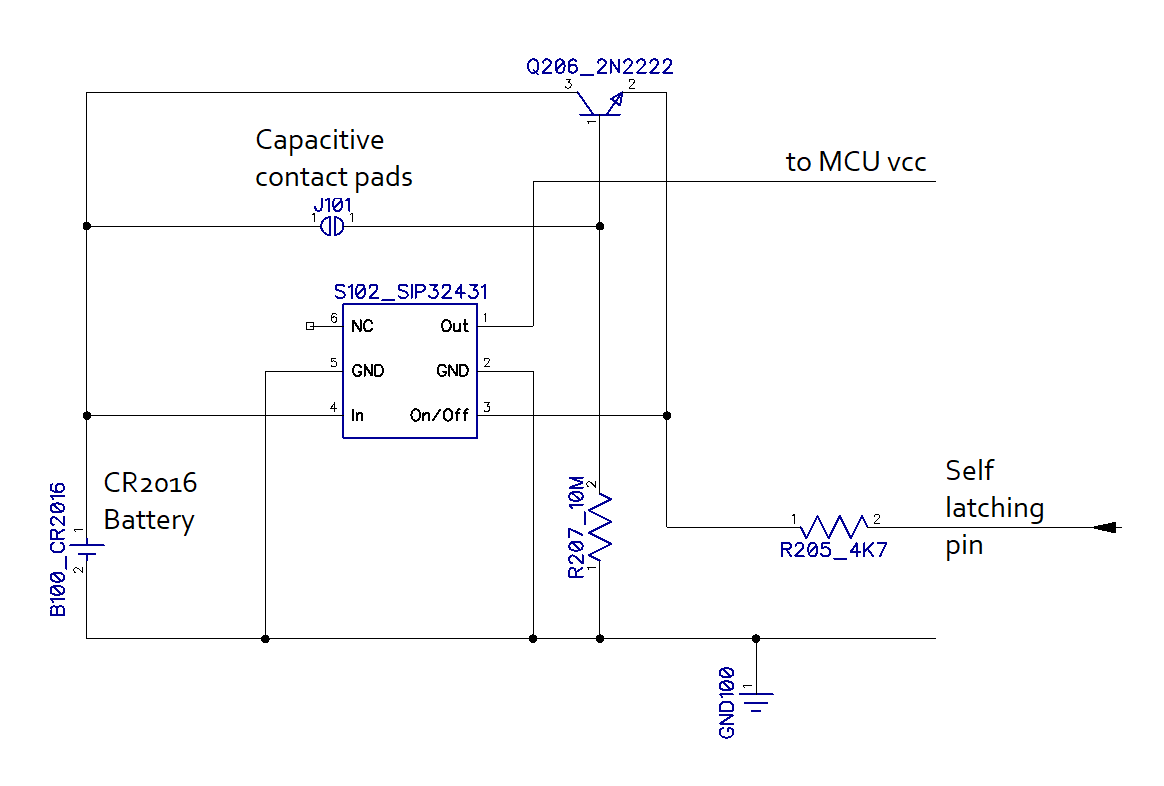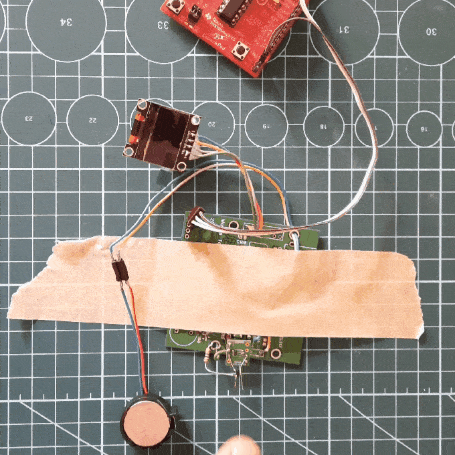-
How the Self Latching circuit works?
06/25/2024 at 17:33 • 0 comments![]()
The circuit uses an amplifier BJT transistor for the contact pads. When these pads (J101) are being touched, there is a leakage current of a few microamps flowing through the resistance of the skin of the finger towards the base of the Q206. This small current is enough to make the BJT conduct enough to turn on the S102 static switch. When the SIP32431 switch turns on, it provides full power to the MCU, display and all the other circuits on the PCB. Once the MCU is being powered, among the first things that it does, is making the Self latching pin High.This first step of priming the current flow happens very fast in less than 4ms. After this step, the user can remove the finger from the pads and the circuit will self sustain through the intervention of the MCU.
After the MCU runs the entire code and scrolls the text, it makes the Self latching pin Low. This turns the entire circuit off.
The cycle repeats each time someone presses the contact pads.
Why is the standby current so small (less than 1nA)?
During the standby, the Q206 BJT is blocked and the SIP32431 is turned off. The only ways for the current to flow would be through the C-B junction of the Q206 (which is reverse polarized), and through the blocked P channel of the internal MOSFET of the static switch. These two blocked semiconductors do have impurities and they do have leakage currents, but these currents are usually the order of 0.00000001 A or less.
-
Testing the circuit
06/25/2024 at 16:29 • 0 comments![]()
I tested the self latching circuit using a scrapped PCB from an old project of mine. This PCB was already having the proper pads for the TSSOP microcontroller.
I powered the circuit exclusively from the coin battery in order to be able to check if that can provide enough power. I also did a leakage current test with a bench Keysight 34461 multimeter. The measured stand-by current was less than 1nA. The current absorbed by the circuit in normal functionality, varied between 5mA and 8mA, depending on the image on the screen. According to the datasheet, the capacity of the battery is around 70mAh and this means that it could power the circuit for an average of around 10h. If the scrolling message lasts around 12s, this can result in being able to display the message roughly 3000 times before the battery drains out.
I am really happy with this test. This means that I can now order the PCB from the supplier.
 Marius Taciuc
Marius Taciuc
